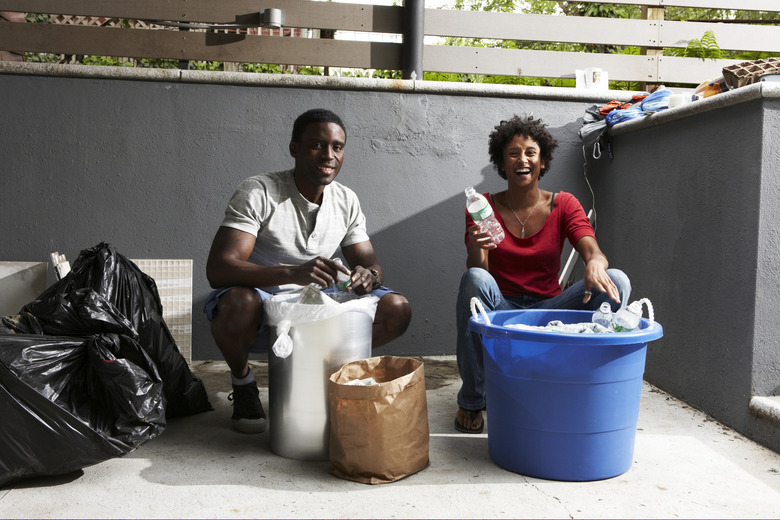How To Make Polyethylene
Polyethylene is the most commonly used form of plastic. It is used to make plastic bags, bottles and children's toys. Like other plastics, it is composed of polymers, or long chains of molecules. In this case, the molecules are made entirely of carbon and hydrogen atoms. You can make polyethylene by purifying a quantity of ethylene, known as the feedstock, before adding a catalyst. This will begin a reaction that causes the ethylene molecules to form the polymer polyethylene.
Step 1
Purify the ethylene feedstock. During the manufacture of ethylene, this monomer can pick up many impurities, such as moisture, sulfur and ammonia. Further impurities can occur during storage and transportation. Run the ethylene through a purity regulator. This device will mix several gases with the feedstock ethylene under high pressure and draws off the impurities and foreign matter. At the end of the purification process, pass the ethylene into the reaction tank.
Step 2
Add a catalyst to the purified ethylene. A typical catalyst used in this process is benzyl peroxide. The molecules in benzyl peroxide have the ability to fall apart. A benzyl peroxide molecule breaks down into two pieces, each with an unpaired electron. This type of molecule fragment is called a free radical. The unpaired electron in a free radical will now search for electrons to pair with in the ethylene feedstock.
Step 3
Allow the benzyl peroxide to react with the ethylene. Since the fragments of the catalyst molecules take electrons from the previously stable ethylene molecules, the latter now try to replace their missing electrons by taking electrons from other ethylene molecules and forming a bond with them. Each time this happens, an electron gap occurs and must be filled by bonding with yet another ethylene molecule. Provided there are few impurities in the feedstock, this process can go on for a long time.
Step 4
Add more catalyst whenever the reaction begins to slow. This will occur as growing chains of molecules find each other and join, ending the search for electrons to fill the gaps created by the initial reaction. More catalyst will restart the reaction.
Step 5
Pour the polyethylene into a pelletizer. This machine will shape small amounts of polyethylene into pellets for storage and transportation. These tiny pellets can then be reheated and formed into whatever shape is needed.
Things Needed
- Ethylene Feestock
- Purity Regulator
- Reaction Tank
- Benzyl Peroxide
- Pelletizer
Cite This Article
MLA
Paxton, Robert. "How To Make Polyethylene" sciencing.com, https://www.sciencing.com/make-polyethylene-10029798/. 24 April 2017.
APA
Paxton, Robert. (2017, April 24). How To Make Polyethylene. sciencing.com. Retrieved from https://www.sciencing.com/make-polyethylene-10029798/
Chicago
Paxton, Robert. How To Make Polyethylene last modified March 24, 2022. https://www.sciencing.com/make-polyethylene-10029798/
